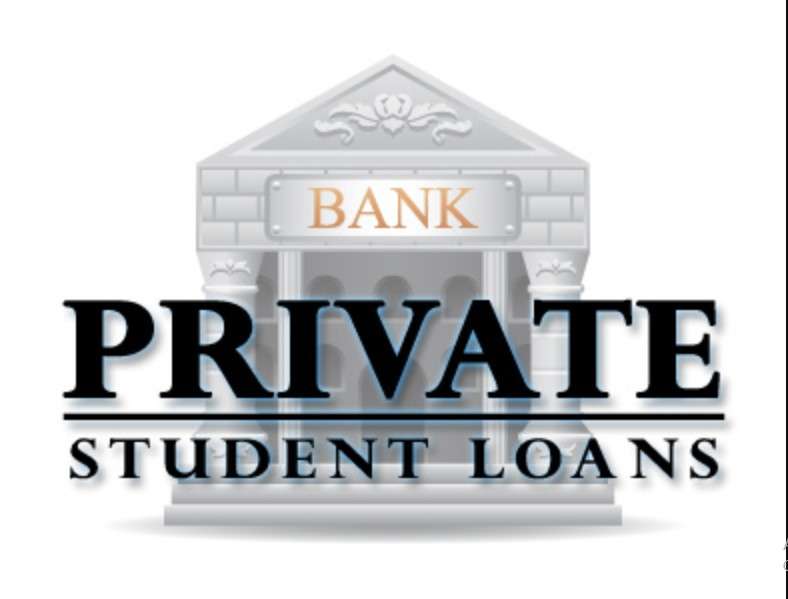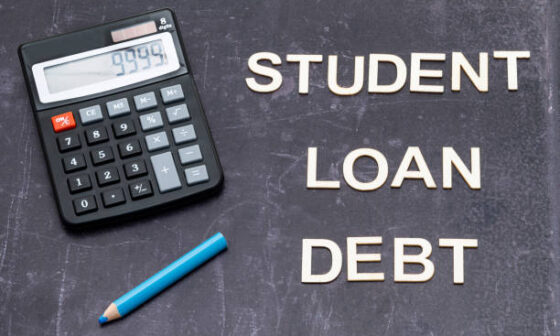Private Loans vs Federal Loans: The Dangerous Choice Students Get Wrong
Choosing how to pay for college is one of the most important financial decisions a student (and family) will make. Among the many options, the difference between taking out federal student loans and private student loans is one where many students get it wrong—and this misstep can have long-term consequences. In this post, we’ll explore private loans vs federal loans, why the choice matters so much, what students often misunderstand, how to compare them point-by-point, and what you should do to protect your financial future.
Why the Comparison of private loans vs federal loans Matters
When you borrow for college, it’s not just about getting the money to pay tuition now—it’s about the terms, protections, and your ability to repay later. The difference between private loans vs federal loans often comes down to the safety net that federal loans provide, and the risks embedded in private loans. According to the official government guidance on federal vs private student loans: federal loans are backed by the government, often offer lower fixed interest rates, more repayment flexibility, and protections. (Federal Student Aid)
Many students and families treat all loans the same—but they’re not. When you make a choice between private loans vs federal loans, you’re choosing between two different levels of protection, cost and flexibility. And unfortunately, when students opt for private loans first (or without exhausting federal options), they may lock themselves into higher interest, fewer repayment options, and less room for error.
What Are Federal Loans vs Private Loans? A Clear Overview
Federal Loans
- Issued by the U.S. federal government (via programs like the Direct Loan Program) rather than banks. (Student Loan Borrowers Assistance)
- Generally offer fixed interest rates (for new loans), simplified application (via FAFSA) and strong borrower protections. (mefa.org)
- Include options like income-driven repayment, loan forgiveness (for certain professions/public service), forbearance, deferment. (Pennsylvania State University)
- Borrowing limits apply—there’s a cap on how much you can borrow from federal loan programs. (Navy Federal Credit Union)
Private Loans
- Issued by banks, credit unions, or other private lenders. (Sallie Mae)
- Often interest rates depend on the borrower’s credit score (and/or cosigner’s credit), and may have variable rates. (NerdWallet)
- Fewer protections, fewer repayment flexibility features. Many of the borrower-protections found in federal loans do not apply to private loans. (Student Loan Borrowers Assistance)
- May be used to fill the “gap” after federal loans, scholarships and grants—however they often come with higher risk.
The Dangerous Mistakes Students Make When Choosing Between Private Loans vs Federal Loans
Here are common pitfalls that trip students up when comparing private loans vs federal loans.
- Assuming private loans and federal loans are interchangeable: Many assume if one loan pays their tuition, it doesn’t matter who issues it. But the protections differ.
- Using private loans first before exhausting federal options: This reverses the usual recommendation: you should generally take federal loans first, because they typically have better terms. (Pennsylvania State University)
- Ignoring repayment terms and protections: Students may focus on monthly payment size now, but ignore what happens if they lose a job, change majors, or need to pause payments. Private loans often lack those safety nets.
- Underestimating interest rate risk: Private loans may offer variable rates or higher fixed rates; students may not fully appreciate the long-term cost. (Students & Residents)
- Borrowing too much thinking “it’s just a loan”: Regardless of source, student loans must be repaid. But with private loans, the consequences for default or hardship can be more severe.
- Neglecting to apply for FAFSA/federal aid before private borrowing: A key step is often skipped, meaning students miss out on federal loan options and end up turning to private.
In short: when you weigh private loans vs federal loans, getting it wrong can lead to higher debt cost, fewer options for relief, and more stress down the road.
Side-by-Side Comparison: Private Loans vs Federal Loans
Here’s a table summarising key features to review when comparing private loans vs federal loans. It’s a snapshot you can use to evaluate your own situation.
| Feature | Federal Loans | Private Loans |
|---|---|---|
| Source of funding | U.S. federal government | Banks, credit unions, lenders |
| Interest rate type | Generally fixed for new loans | Fixed or variable; often higher |
| Interest rate based on credit | Usually no credit check (for most undergrad federal) (Pennsylvania State University) | Credit check required; cosigner often needed |
| Borrowing limits | Annual & aggregate caps apply (Navy Federal Credit Union) | Lender sets limits; can be large |
| Repayment flexibility | Income-driven plans, forbearance/deferment, loan forgiveness available (Federal Student Aid) | Limited/no income-based plans; fewer protections |
| Grace period after school | Yes, typically (e.g., 6 months) | Varies; may require payments sooner |
| Variable interest risk | Low to none for new federal loans | Higher risk if variable interest rate |
| Best practice advice | Take federal loans first | Use only after federal options exhausted |
When, If Ever, Does a Private Loan Make Sense?
Because the “private loans vs federal loans” comparison tends to favour federal loans, you might ask: “Is there ever a scenario when a private student loan is appropriate?” The answer: yes—but only with caution and after careful evaluation. Some situations where private loans might be considered:
- You’ve maxed out federal loan limits and still have a funding gap, and you’ve already maximised scholarships/grants.
- You have a very strong credit history (or cosigner) and find a private loan with a competitive fixed rate that is lower than your federal options—but you understand you’re giving up some protections.
- You plan to complete the degree quickly, expect high income soon, and are confident you can repay without needing federal protections.
However, most financial aid experts recommend that students treat private loans as a last resort, not a first choice. (Student Loan Borrowers Assistance)
If you are going the private route, some questions you should ask:
- Is the interest rate fixed or variable?
- Does the lender offer forbearance/deferment if I lose income or change programs?
- What are the repayment terms if I don’t graduate?
- Do I need a cosigner—and does the cosigner understand their obligations?
- Is there any built-in loan forgiveness, or am I on my own?
- What happens if I default—what are the penalties?
Hidden Risks of Choosing Private Loans Over Federal Loans
When you lean toward private loans without fully understanding the risks, you expose yourself to several hidden dangers:
- Variable interest rates may escalate: A loan may start at a “good” rate, but if it’s variable it could climb significantly.
- Fewer options for forgiveness or income-based repayment: Federal loans offer options based on income or public service; private lenders rarely offer comparable frameworks. (NerdWallet)
- Less leniency in hardship: If you defer or forbear payments for federal loans, there are structured programs; private lenders may simply charge fees or raise interest. (Pennsylvania State University)
- Gaps in just because of borrowing limits: Because federal loans have caps, students sometimes use private loans to fill the gap without fully planning how to repay that extra debt. This may lead to heavier burdens.
- Borrowing without institutional guidance: Many school financial aid offices emphasise federal loans first; private loans may feel more like credit cards—riskier.
- Lower borrower protections in default: Private loan defaults may have fewer protections, more aggressive collections, and poorer outcomes for borrowers. (Students & Residents)
Practical Steps Students Must Take Before Borrowing: Private Loans vs Federal Loans
Here’s a checklist you should follow if you are evaluating loans for college. Treat it as due diligence you must complete.
- Complete the FAFSA early
- Before any loan decision, fill out the Free Application for Federal Student Aid (FAFSA) to determine how much federal aid (including federal loans) you are eligible for. Colleges use FAFSA to package aid.
- Explore grants, scholarships and work-study
- These don’t need to be repaid—reduce how much you must borrow.
- Use federal student loan options first
- Review the federal loan terms, borrow only what you really need. Remember federal loans tend to have better protections.
- Compare private loans only after exhausting reasonable federal options
- If there is still a funding gap, shop around for private loans—but compare rates, terms, protections, and credit/cosigner requirement.
- Understand full loan terms before signing
- Fixed vs variable interest, payments while in school, grace period, default consequences, whether the loan counts toward deferment, whether it qualifies for future forgiveness.
- Borrow conservatively
- Estimate your post-graduation income and ensure you can realistically handle repayment. Avoid borrowing “just because you can”.
- Keep documentation and stay informed
- Save your promissory notes, ask for clear terms, and revisit your repayment plan every year.
- Plan for worst-case scenarios
- What if you don’t graduate on time? What if you change career? What if you lose your job? For federal loans you may have options; private loans may leave you more vulnerable.
By following this process, you’ll be making the right decision between private loans vs federal loans—not purely under stress or based on “this loan was easy to get”.
When the Choice is Wrong: Real-Life Examples
Here are examples of how choosing private loans when federal loans would’ve been better leads to major problems:
- A student took out large private loans because tuition was rising and federal caps were reached. Later, unable to find high-paid work, they had high monthly payments and no income-based plan.
- Someone refinanced federal loans into private loans because of a low rate—but in doing so lost eligibility for federal forgiveness or income-driven repayment. As a result, when job income dropped, they were trapped. (TIME)
- A borrower assumed private lender would offer forbearance in a hardship—but found the lender’s policy limited such options, so they defaulted and credit was severely impacted.
These cautionary tales underline the importance of comparing private loans vs federal loans before signing, not after.
Key Questions to Ask Yourself When Weighing Private Loans vs Federal Loans
Here are questions you should pose before proceeding:
- After federal loans, grants, scholarships and work-study are applied, how much more do I really need to borrow?
- What is the interest rate for the federal loan option (fixed) vs the potential private loan (fixed or variable)?
- Does the private loan require payments while I’m still in school or will interest accrue?
- What are the repayment options if I earn low income, lose job, leave school, or change major?
- Am I comfortable if my repayment terms change in the future (e.g., variable rate or no income-based plan)?
- Do I have/need a cosigner for a private loan, and what risk does that cosigner assume?
- How will the extra loan amount affect my debt-to-income (DTI) ratio after graduation, and my ability to buy a home, start a business, etc?
- Is there any loan forgiveness or cancellation available in my field (public service, etc) — and will taking a private loan disqualify me?
- If the lender raises the interest rate (in a variable loan), can I still handle the payments?
If you cannot answer these clearly and confidently — especially concerning protections and terms — you may be entering dangerous territory choosing a private loan over a federal loan.
Conclusion: Make the Smart Choice Between Private Loans vs Federal Loans
At the end of the day, private loans vs federal loans isn’t just an academic comparison—it’s a decision that can affect your financial future, your career, your stress levels, and your ability to bounce back if things don’t go exactly to plan.
Here’s a summary of the take-aways:
- Federal loans offer strong protections, fixed rates, income-based repayment and forgiveness possibilities.
- Private loans can fill funding gaps—but come with higher risk, fewer protections, variable rates, and credit/cosigner requirements.
- The default smart strategy: “Use federal loans first; consider private only as a last resort and after careful comparison.”
- Ask the hard questions, borrow conservatively, and ensure you fully understand the terms before committing.
- The choice you make now between private loans vs federal loans could save you tens of thousands of dollars and years of stress.
If you’re about to borrow for college, fill out the FAFSA today, talk with your financial aid office, compare all loan options, and make sure you’re not trapped in a loan that limits your future instead of helping it. Because when you get this choice right, you’re not just financing college—you’re choosing financial freedom.
Making smart borrowing decisions matters. Choose wisely.








1 comment
真免费!价值万元资源,不要一分钱,网址:https://www.53278.xyz/